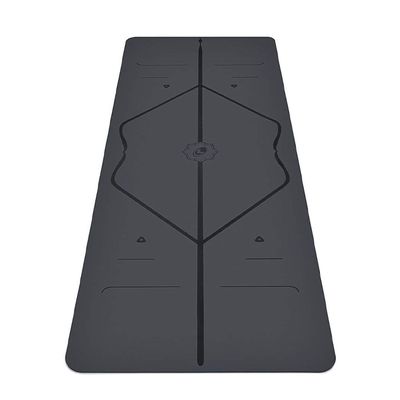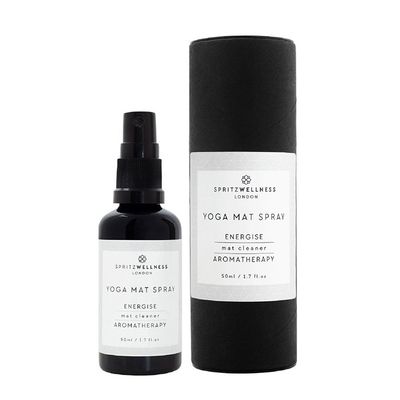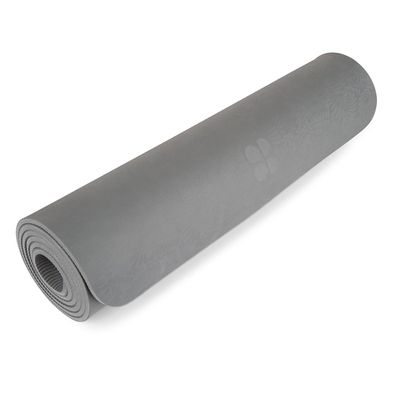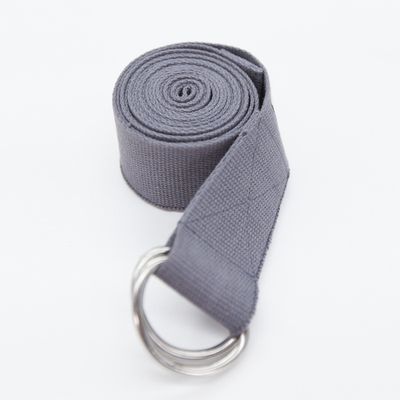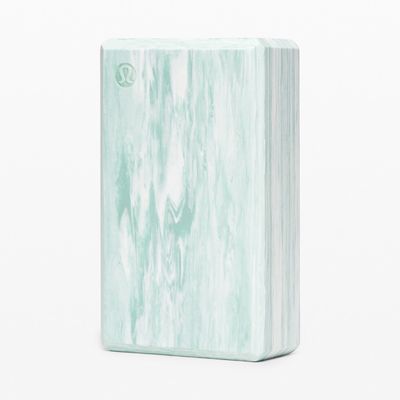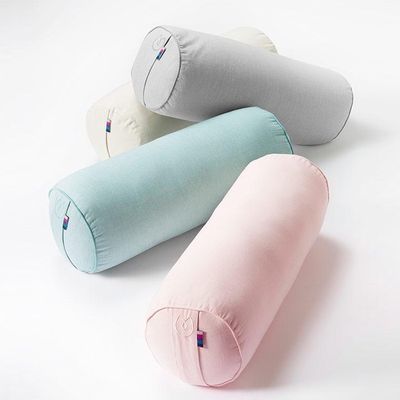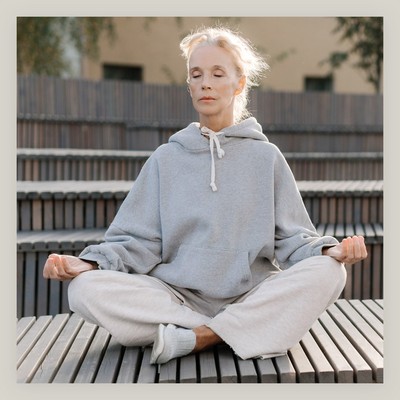
How To Get Started With Yoga
All products on this page have been selected by our editorial team, however we may make commission on some products.
Know The Benefits
“Yoga has a huge range of benefits, but it can be particularly beneficial for mature women. Studies show yoga has the potential to lower blood pressure, having a significant effect on both systolic and diastolic blood pressure, and in turn reducing your risk of stroke and coronary heart disease. Being a low-impact activity that combines strength and flexibility, it can also help you manage bone, joint and post-surgery issues, and yogic breathing has been proven to strengthen the relaxation response and help you better manage symptoms of anxiety and depression.” – Leela Miller, yoga teacher at Triyoga
There’s More To It Than The Physical
“Yoga is much more than a physical practice although practising regularly will engage your muscles, build strength and burn calories. Most importantly, yoga is a practice that cultivates awareness of your physical, mental, emotional and spiritual state and this can improve your mood and how you feel in your body, putting you in a better frame of mind. With regular practice, it can boost mood and cognitive function. Yoga tends to include some form of meditation, which can help you find stillness in the present moment, offering a sense of calm, grounding and clarity.” – Gabriella Espinosa, yoga teacher at Movement for Modern Life
Find Your Style
“Your health goals will determine what style of yoga you choose. If you want to build strength and lose a few pounds, consider ashtanga or vinyasa flow classes, which include more challenging poses (also referred to as asanas) and are more intense on the body. Hatha, yin and restorative yoga, on the other hand, are better for flexibility and stress release. If you like variety, consider Iyengar, a slow and precise form of yoga which encourages the use of accessories such as belts to aid postures, or kundalini, an expressive form of yoga which focuses on meditation, chanting and breathing. If you want to make progress and see physical development, try ashtanga or Bikram, which are set sequences (i.e., you do the same sequence every class). Ashtanga classes comprise a precise set of asanas that flow together, so you’re rarely still, while Bikram can include 26 traditional asanas. The best thing to do is try something you think might suit you, but don’t be put off if it doesn’t feel right the first time – the beauty of yoga is there are plenty of other styles to choose from.” – Laura McGlennon, senior yoga teacher registered with Yoga Alliance Professionals
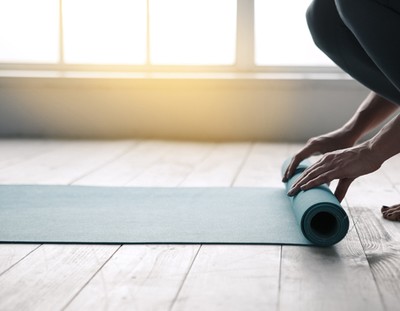
ISTOCK/DIMA_SIDELNIKOV
Create A Practice
“If you’re new to yoga, consider starting with a beginners’ level hatha yoga class. Hatha is an umbrella form so classes vary but they tend to include a mix of asanas, breathing exercises and meditation – all at a manageable pace. As you age, consider practising a combination of slower-paced strength building classes that incorporate breath and movement alongside restorative yoga to relax and restore the body. Aim for at least three yoga sessions a week for the best results.” – Gabriella
Try Yoga Nidra For Sleep
“If you struggle with insomnia, consider yin yoga or yoga nidra, both of which are calming, slow forms of yoga designed to calm the nervous system and create a deeply meditative, peaceful state. Cortisol levels rise with age and tend to be higher in females than males, making this slower-paced form of yoga one to try if you are concerned with stress levels and have difficulty sleeping.” – Laura
Invest In A Decent Mat
“A yoga mat is essential if you are practising at home but ensure what you are buying is a yoga-specific mat and not a fitness mat. Mats designed for fitness and higher-intensity workouts tend to be very thick and spongy, which may affect your ability to balance. They also tend to be stretchy, which can cause you to slide, affecting your ability to balance in some standing postures. A yoga mat with a thickness of around 1.5-2 inches is perfect to protect your joints.” – Laura
Props Can Also Help
“A yoga mat is a good investment, but props can also support your practice and make things feel a little easier. Some days, your body may need props and others not so much. A brick or block can help you feel more comfortable in both seated and standing postures; a belt is a good idea if you can’t reach your toes or stretch far in certain poses; and a bolster is a sausage-shaped pillow which helps to open up your back during relaxation. If you’re just starting out with yoga, substitute with items you have around the house before spending a lot on props – for example, a folded-up bath towel or cushion can be used in place of a block, and a soft belt or an old tie can be used instead of a yoga strap. Once you’ve done a few classes and worked out what you enjoy, you can then invest in some props, but in the meantime, there’s plenty around the house that can help. It’s also worth keeping a cosy pair of socks to hand for the relaxation session at the end of a class.” – Laura
Listen To Your Body
“Yoga postures are non-violent movements, meaning they won’t create a build-up of lactic acid in the muscle fibres, as can happen with typical gym-based exercises. This means that yoga won’t fatigue your body as much and you won’t get achy muscles in the days following a class. However, if you do feel sore after doing a particularly intense practice, take a couple of days off.” – Laura
Get Mindful
“Most yoga classes end with five to ten minutes of relaxation and meditation, which is often referred to as savasana. Don’t stress about doing meditation ‘right’ – just listen to your instructor and let them guide you. Some yoga classes end with a body scan, which brings awareness to each part of the body – this can be a good way to start meditating, bringing your focus inwards and calming the nervous system. If you struggle with the mindfulness aspect of yoga, try to just focus on your breathing. Counting your breaths up to the count of ten is a good place to start, or you could focus on the movement of your chest rising and falling. There’s no right or wrong.” – Laura
Standing Poses Can Build A Stronger Body
“As we age, our oestrogen levels decline and this can affect bone density, so taking preventative measures to support your bones is imperative. Yoga addresses the key pillars of bone health through weight bearing, muscle engagement and balance. Standing poses, such as the classic ‘tree’ pose, offer balance and stability, while downward facing dog allows for weight bearing through the hands, arms and legs, and back-bends such as the cobra stimulate the posterior spine. At the same time, gentle twists symmetrically stimulate the spinal vertebrae, which can support back health.” – Gabriella
Sun Salutations Can Keep Joints Healthy
“Doing sun salutations on a daily basis can keep your joints mobilise. Sun salutations are essentially a sequence of poses typically performed at the start of a Hatha or vinyasa flow. A combination of poses designed to engage and stretch the whole body, it can also work wonders to open up the hips and keep them moving. Meanwhile, stretching the front of the body in postures such as cobra, camel and bridge can also activate the vagus nerve, which sends a message to the brain to relax, so be sure to incorporate them, too, for total mind-body benefits.” – Laura
Know How To Get Going
“If you want to start doing classes online, do some research – read the class description and the teacher’s bio to see if they resonate with you and your needs. Also consider doing two-way live classes where the teacher can see you and provide feedback, i.e., Zoom classes as opposed to one-way, pre-recorded sessions on YouTube. Also chat to your friends – talk to someone you know with similar needs to yours who is practising online and see how their practice fits with you and what you’re looking for. Finally, don’t be afraid to consult a yoga centre or teacher directly – they are there to help you. Tell them what you’re looking for and see what they advise. Before starting a yoga practice, you should always double check with your GP, too.” – Leela
Stick With It
“Yoga is your natural state of being when you strip away all the noise in your body – remember you can’t do it wrong. Don’t beat yourself up if you’re not a natural, just start with a few minutes every day, and if that means doing yoga propped up in bed then great. Even doing some simple stretches seated on a chair is a good place to start.” – Leela
Ready to get going? Follow these rules before you begin…
-
Always work on a non-slip mat.
-
Use blocks, bolsters and belts to assist your practice, where needed.
-
Wait four to five hours after a heavy meal, and ideally a couple of hours after a snack.
-
Always practise barefoot to avoid slipping.
-
Although you should feel challenged in yoga, you shouldn’t force yourself to be in any pain – ease yourself into the moves.
-
Breathe slowly and calmly, inhaling and exhaling through your nose.
For more information visit YogaAlliance.co.uk, Triyoga.co.uk and MovementForModernLife.com
Discover Our Favourite Products Below...
DISCLAIMER: Features published by SheerLuxe are not intended to treat, diagnose, cure or prevent any disease. Always seek the advice of your GP or another qualified healthcare provider for any questions you have regarding a medical condition, and before undertaking any diet, exercise or other health-related programme.
DISCLAIMER: We endeavour to always credit the correct original source of every image we use. If you think a credit may be incorrect, please contact us at info@sheerluxe.com.
